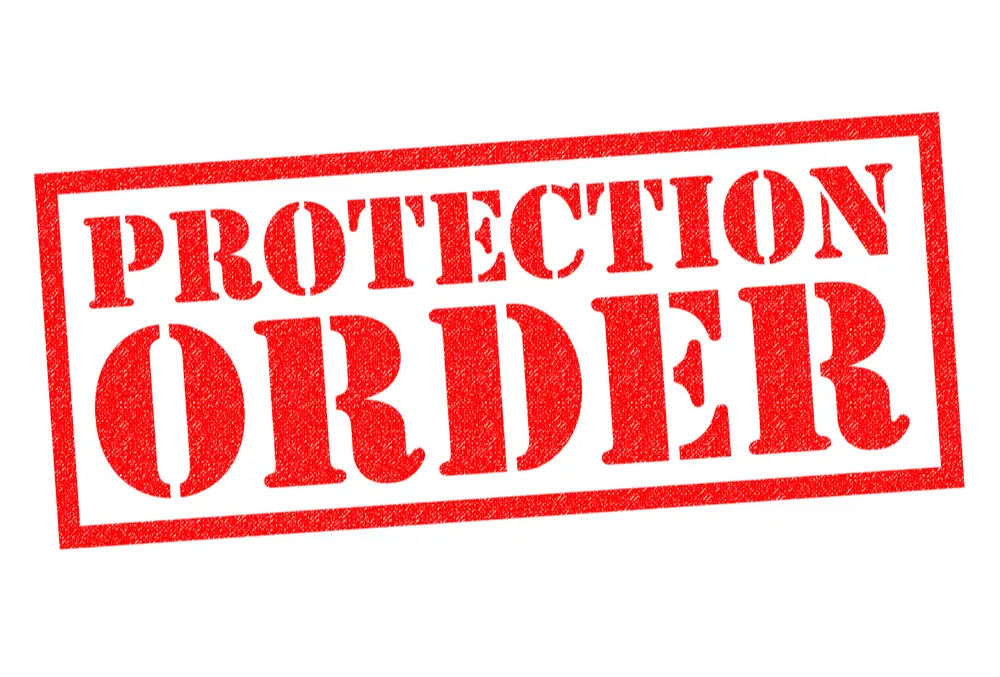Last Updated on May 21, 2022 by Fair Punishment Team
An Order of Protection, also sometimes called a Restraining Order, is a very useful legal document, the primary purpose of which is to protect members of the public from harassment and harm.
Unfortunately, there are some cases in which Orders of Protection are awarded unfairly, with serious consequences for the person against whom the order is filed.
Sometimes, the party who filed for the Order of Protection wishes to have the order revoked.
If you have had an Order of Protection filed against you unfairly in the state of New York, or wish to revoke an Order of Protection that you requested, there are steps you can take to have the order dismissed.
We will be covering these steps in this article, but first, let’s outline the basics of Orders of Protection in New York state.

What Is An Order Of Protection?
As we briefly outlined earlier, an Order of Protection, in its simplest form, is a document that provides an individual with legally enforceable protection against an abuser or stalker.
You might also hear this document referred to as a Restraining Order.
An Order of Protection orders one individual to stay at least a certain distance away from another individual (the complainant) until the order expires.
Other behavioral orders may be stipulated in an Order of Protection, with which the named individual must comply.
Orders of Protection may be long-term or temporary, in which case, they are called Temporary Orders of Protection.
How Does An Order Of Protection Work In New York?
There is specific legislation surrounding Orders of Protection in New York, which differs in some places from the Restraining Order proceedings in other states.
Reasons For Orders Of Protection
In New York, an Order of Protection can be granted for various reasons.
Most commonly, a person requests an Order of Protection against another person because they do not want to have any contact with that person going forward. This is often due to domestic violence, harassment, or stalking (see also ‘What Is Gang Stalking?‘) (see also ‘What Is Gang Stalking?‘).
An Order of Protection granted for this reason would prohibit a named individual from approaching or having contact by other means with the person seeking the Order of Protection.
This protection also extends to the children of the person requesting the Order of Protection.
However, Orders of Protection in New York can also be granted for more specific, short-term purposes, and may prohibit certain behaviors and interactions without imposing a full no-contact order.
For example, a person might request an Order of Protection so that they can enter a residence accompanied by law enforcement to collect belongings from another person’s home if it is believed that the latter poses a threat to the former.
An Order of Protection can also order one party to return belongings or documents to another party, to permit the other party to terminate a living arrangement, or to order a person to surrender possession of any firearms.
Specific behaviors may be prohibited by an Order of Protection without completely restricting communication or contact between the parties involved.
For example, the court might rule that one party should not make physical contact with the other party while allowing communication to continue.
The defendant in the case might also be ordered not to engage in certain behaviors or activities in the presence of the plaintiff or the plaintiff’s children.
Obtaining An Order Of Protection
In New York, an Order of Protection is usually obtained through the Family Court, the Criminal Court, or the Supreme Court, depending on the specifics of the case.
Orders of Protection obtained through the Family Court typically concern Family Offenses. Family Offenses are a category of offenses committed by either a current or former spouse, a parent or child, or another member of the household or family.
Family Offenses encompass domestic violence, including such crimes as assault and sexual abuse.
The Criminal Court will conduct proceedings involving an Order of Protection if the person against whom the order is being brought has been arrested.
For example, if an abuser is arrested for assault, the Order of Protection against them will be handled by the Criminal Court.
Finally, it is sometimes necessary for an Order of Protection to go through the Supreme Court. Usually, the Supreme Court will be the one to issue an Order of Protection if the order comes as part of divorce proceedings.
Order Protection Duration
The length for which an Order of Protection is valid in New York depends on the specifics of the case at hand.
Most of the time, Orders of Protection obtained through the Family Court last for up to 2 years, but if there are aggravating factors, such as domestic abuse, this period may be extended up to 5 years.
A Final Order of Protection, which is issued by the Criminal Court at the end of criminal proceedings following a Temporary Order of Protection, can last as long as 8 years.
Why Might An Order Of Protection Be Dismissed?
There are a few different reasons why an Order of Protection might be dismissed, but ultimately, it comes down to one or both parties expressing disinterest in maintaining the order.
In some cases, the person against whom the Order of Protection was filed will challenge the Order of Protection. A challenge to the Order of Protection could be made on various grounds.
If this individual believes that the claims made by the person who obtained the order are false, they might work with an attorney to prove the invalidity of those claims in court.
Should the evidence prove that the Order of Protection was obtained on false grounds, the order may be dismissed.
The person bound by the terms of the Order of Protection might also object to the decision of the court to allow the Order of Protection, believing it to be disproportionate to the evidence presented. In this case, they might also seek legal assistance to have the Order of Protection dismissed.
On the other hand, sometimes it is the person who requested the Order of Protection who later wishes to have it dismissed.
This could be for any number of personal reasons, including the desire for reconciliation with the party against whom they filed the order. In this case, where neither party is interested in maintaining the Order of Protection, the court is likely to rule that
It is worth noting that if neither party attends court proceedings in relation to the Order of Protection, this can be interpreted as disinterest by both parties in continuing with the Order of Protection, and it may consequently be dismissed.
An Order of Protection, either Temporary or Permanent, is more likely to be dismissed if the party against whom it is being imposed does not have any criminal charges and if there is not an ongoing domestic violence case against them.

How To Get An Order Of Protection Dismissed In New York
Dismissing An Order Of Protection Against You
If you have an Order of Protection against you in the state of New York that you feel has been granted unfairly or based on false information, you may be wondering how to remedy the situation.
The first thing you should do in this case is to contact a reputable attorney.
If the person who took out the Order of Protection against you is interested in maintaining the order, you will need to bring your case before a judge in the relevant court since the decision to dismiss an Order of Protection is ultimately up to the judge’s discretion.
Bear in mind that it is almost never recommended to alter or dismiss an Order of Protection once it has been granted. This is because Orders of Protection exist for safety purposes, so judges are understandably reluctant to change them.
You will, therefore, need legal assistance to challenge the Order of Protection against you if your character and actions have been genuinely misrepresented.
In the meantime, you should compile any evidence you have in your possession to dispute the Order of Protection against you.
If you have been falsely accused of abuse, presenting evidence to the contrary in the form of text messages or voice recordings may help your case. Evidence of your criminal record may also be needed.
You will need to write a statement explaining why you believe the evidence given against you to obtain the Order of Protection to be false, or why you believe the Order of Protection to have been granted unfairly.
Your statement should be supported by relevant evidence. Your legal counsel will be able to assist you with this.
Dismissing An Order Of Protection Against Someone Else
If you have requested an Order of Protection against another person and now want it to be dismissed for whatever reason, you may be able to achieve this simply by stating your disinterest in continuing with the Order of Protection to the judge.
As long as neither party is interested in pursuing the Order of Protection further, and assuming that there are no aggravating factors (such as proof of domestic violence) involved in the case, the judge will be likely to dismiss the order.
However, if there are domestic violence, aggravated assault, or sexual abuse charges involved, the judge will be unlikely to dismiss an Order of Protection for your own safety.
If you wish to reconcile with a person against whom you have an Order of Protection, in the absence of any threat to your safety or the safety of your children, you must make sure that the Order of Protection is either dismissed or revoked before you have any interaction with the other party that would violate the order.
While it is not possible for you, as the plaintiff, to violate the terms of the order, the other party could face sanctions including jail time.
You will need to write a statement or give oral testimony outlining why you wish to revoke the order and the judge will need to be satisfied that dismissing the Order of Protection will not jeopardize your safety.
Final Thoughts
Orders of Protection in New York are intended to protect one individual from another following abusive or harassing behavior.
However, there are reasons why one or both parties named in an Order of Protection might want the order to be dismissed.
If you have been unjustly accused of abuse or harmful behavior and have had an Order of Protection filed against you as a result, you should contact a lawyer as soon as possible.
They will help you to collect evidence and present your case before a judge.
If you would like an Order of Protection that you requested against someone else to be dismissed, you should express your reasons for this to the judge presiding over your case.
If neither party wishes the order to continue and there are no criminal charges or direct threats to one party’s safety, the order may be dismissed.

